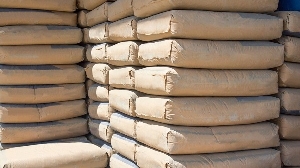 The global concrete and cement market size is estimated to grow by $469.01 from 2023 to 2027
The global concrete and cement market size is estimated to grow by $469.01 from 2023 to 2027
The global concrete and cement market size is estimated to grow by $469.01 billion from 2023 to 2027, according to Technavio market research report.
This growth is expected to occur at a compound annual growth Rate (CAGR) of over 7.1% during the forecast period.
The report noted that the concrete and cement market is experiencing robust growth driven by the construction boom, especially in urban centers.
Demand for materials like concrete pipes, paving blocks, and ready-mix concrete is on the rise due to the planned skyscrapers and high-rise buildings, the report said.
Additionally, rapid hardening cement and low heat cement are gaining traction for their specific applications, while hydrophobic and colored cement cater to diverse needs.
According to the report, despite opportunities, the market faces restraints such as fluctuating raw material costs and regulatory challenges.
However, sustainable construction practices and digitalization are emerging as key drivers, promoting efficiency and reducing environmental impact.
It stated that the adoption of advanced concrete technologies further enhances durability and strength, meeting the demands of modern infrastructure projects.
The report further said that in this dynamic landscape, staying abreast of market trends and leveraging innovations is essential for industry players to thrive.
Major challenges in Nigeria, other developing countries
The report noted that building materials such as stainless steel, hardened steel, cast iron, cement, concrete, bricks, and aggregates are widely used in construction.
“The cost of cement accounts for nearly 10% of the total construction cost. The cost of steel is about 9% of the total construction cost, and other materials account for nearly 27% of the total construction cost.
The availability of these materials leads to variable pricing, wherein the rise in the price of one building material increases the total cost of construction, leading to the requirement of additional investments in the total construction cost.
Construction players in European countries, such as the UK, France, and Germany, are economically strong and can manage price hikes in ongoing construction projects,” it said.
According to the report, African countries, such as Nigeria and Namibia, are unable to manage price hikes because of the volatile economic conditions in these countries.
“White cement is a type of cement, which is widely used to ensure clean, colorful, consistent designs. However, white cement is more expensive than gray cement, as white cement production generally requires 40% higher energy than normal gray cement production.
The operating cost of white cement in developing countries, such as India, is high, owing to high taxes imposed by the government and high operating costs in manufacturing sites, which increase the price of white cement.
Such high costs will hamper the growth of the global white cement market, which, in turn, will impact the growth of the global concrete and cement market during the forecast period,” the report noted.
Shift towards sustainable practices
The report said that recent trends indicate a shift towards sustainable practices, with a focus on energy-efficient manufacturing processes and adherence to international standards.
It noted that this shift is driven by increasing regulatory standards and a growing awareness of the importance of sustainability in construction.
“Moreover, advancements in technology, such as digitalization and remote monitoring, enhance operational efficiencies and enable predictive maintenance, ensuring smoother operations at cement manufacturing facilities.
Additionally, the market sees opportunities in developing markets where infrastructure investments are on the rise, while in developed markets, there is a focus on infrastructure resilience and smart construction practices.
Overall, the concrete and cement market continue to evolve, driven by a combination of factors including demand from construction projects, regulatory requirements, and technological advancements,” it said.
- UK envisages increase in freight following fresh services at Prempeh l International Airport
- Why appoint NPP parliamentary candidate as Managing Director of NIB? – Bright Simons to Akufo-Addo
- Millennium Challenge Corporation open to work in Ghana again - CEO
- Customs Division commits to resolution of challenges with uncleared cargo lists
- Watch how a herd of 45 cattle was flown from Canada to Ghana in 1974
- Read all related articles












